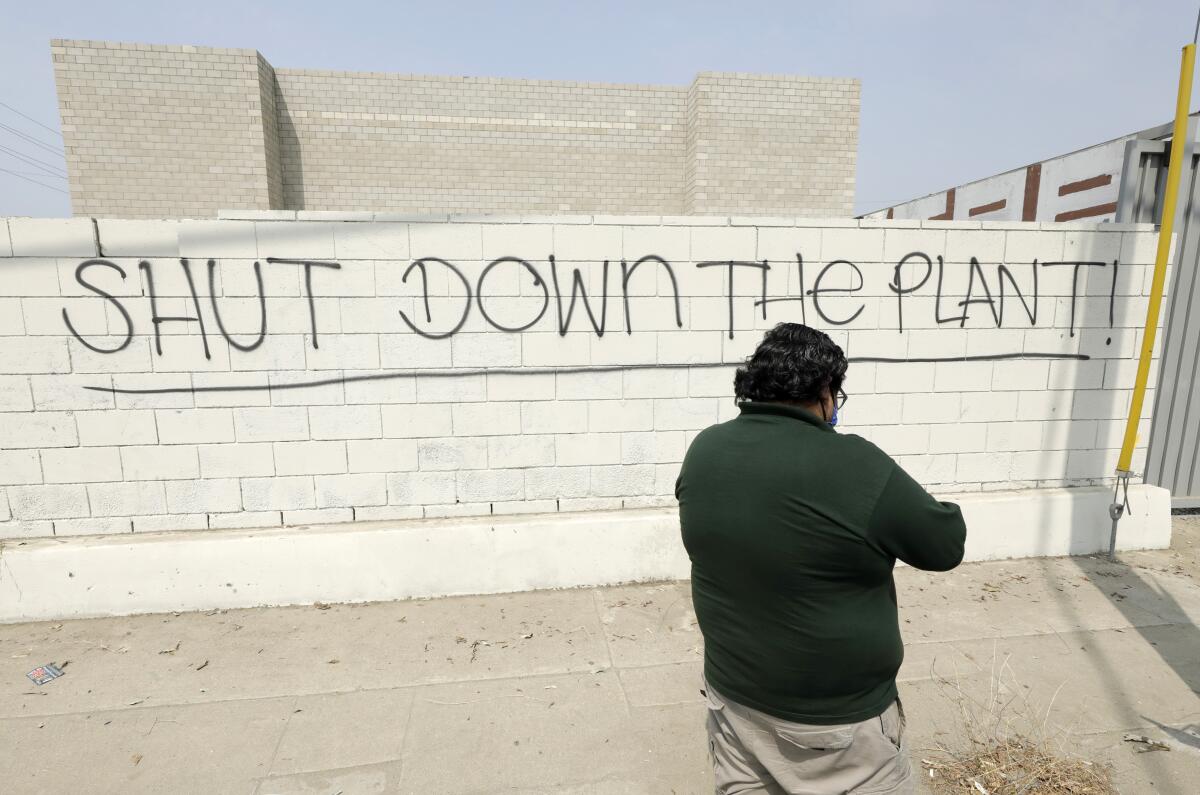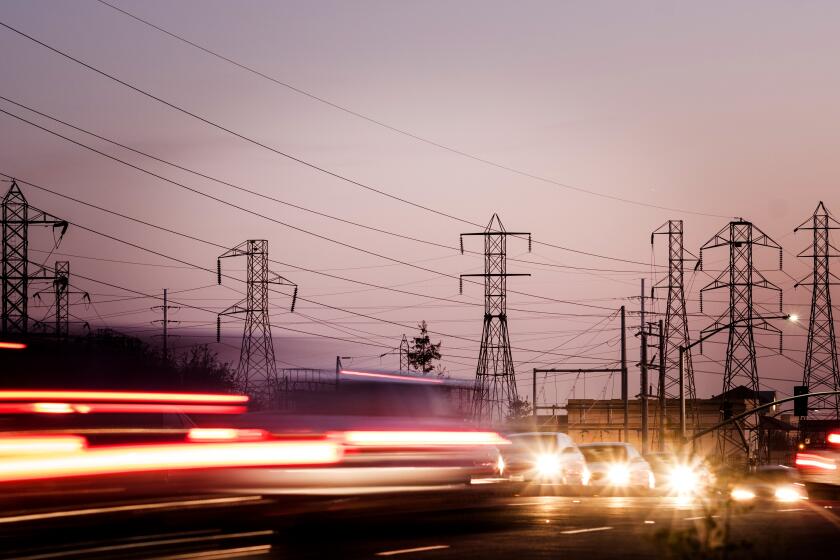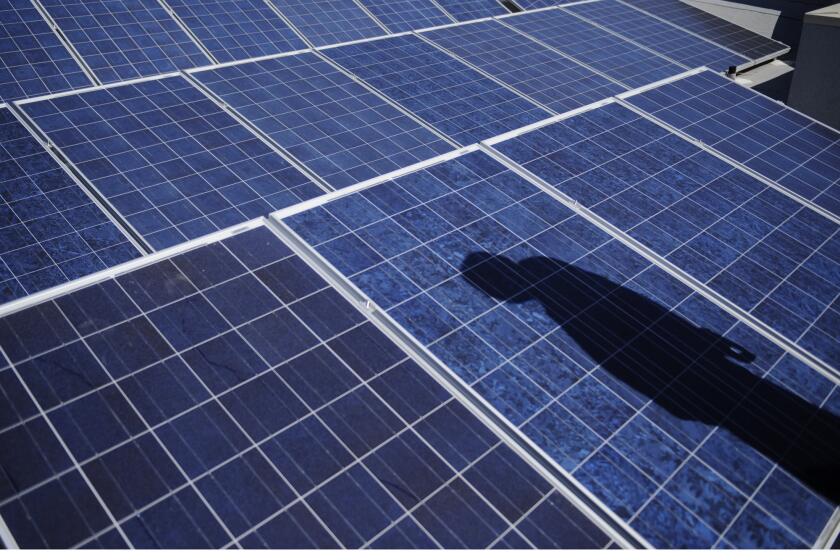Los Angeles hid a methane leak for a year. Activists want the power plant shut down
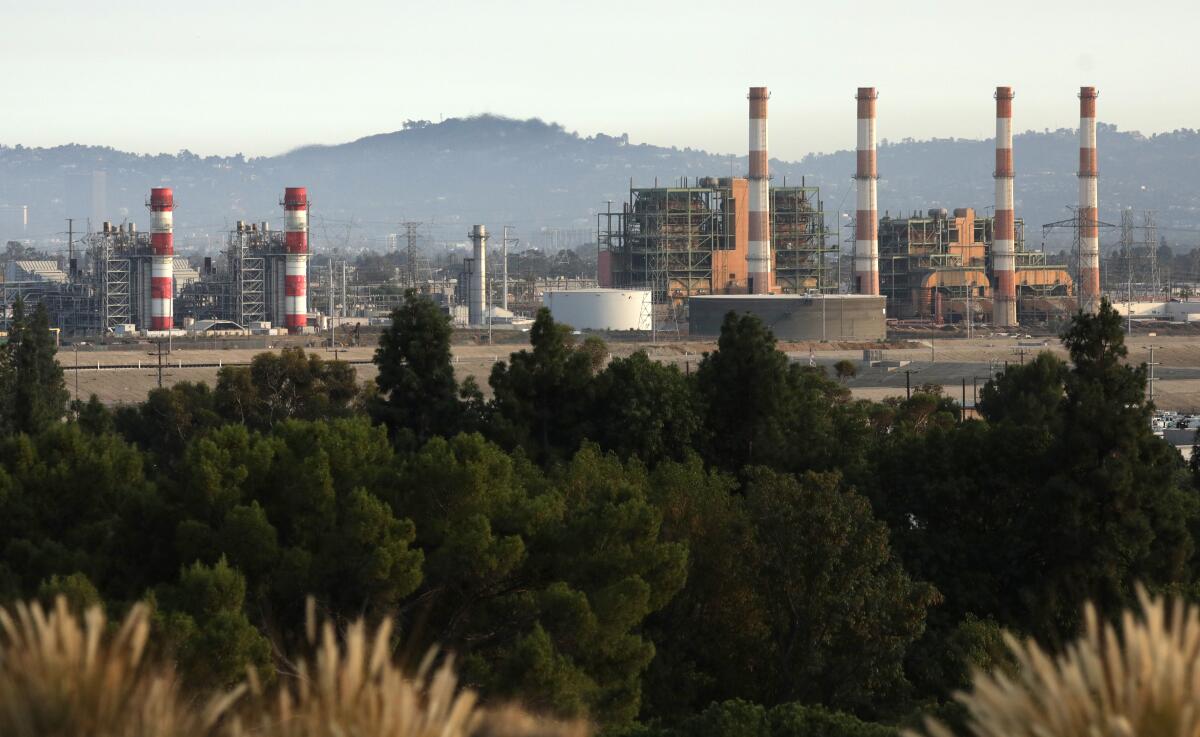
Andres Ramirez doesnât know who scrawled the words âSHUT DOWN THE PLANTâ across a cinder-block wall outside Valley Generating Station, where red and white smokestacks tower over the northeast corner of the San Fernando Valley.
But in a neighborhood burdened by dozens of landfills, recycling centers, junkyards, trucking companies and other noisy and polluting industrial facilities â and bisected by three major freeways â the graffiti artist could have been almost anyone.
Residents of Sun Valley and Pacoima breathe some of Californiaâs worst air and suffer from asthma-related hospitalizations at rates far higher than most of the state. So when the Los Angeles Department of Water and Power revealed last month that its power plant had been leaking methane gas for at least three years, local outrage was loud and swift.
The leak âreally fired up the community on this greater conversation of why is this plant even open still,â Ramirez said as he walked past the facilityâs main entrance, stepped over sidewalk chalk art reading âKIDS DESERVE CLEAN ENERGY.â He pointed out that the surrounding community is mostly Latino and low-income.
âFor Black folks, itâs police kneeling on their necks. For a community like Sun Valley, itâs poisoning you slowly for 75 years,â he said.
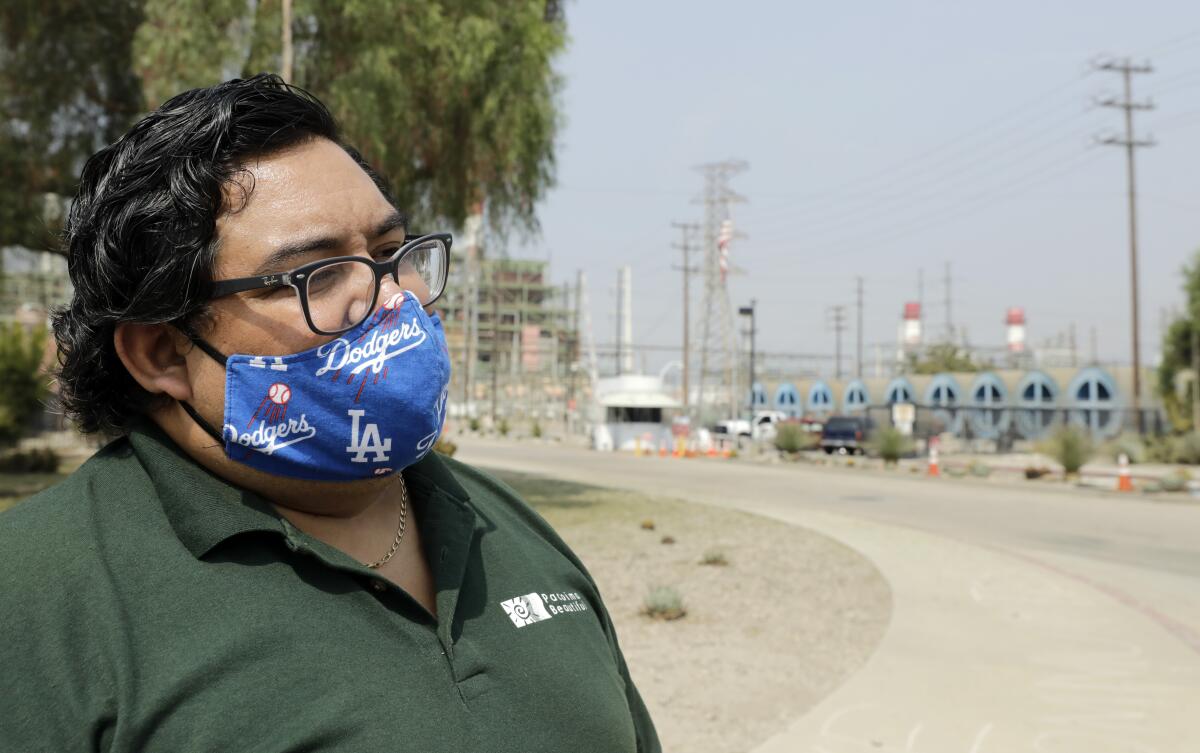
Ramirez is policy director for Pacoima Beautiful, an activist group thatâs been campaigning for more than a year to shut down the power plant. Members believe L.A.âs transition to cleaner energy sources is moving too slowly and leaving their community behind.
City officials see Valley Generating Station as a critical tool for keeping the lights on when the sun isnât shining and the wind isnât blowing â at least until energy storage technologies are cheaper and more versatile.
During the recent Labor Day weekend heat wave, Valley Generating Station and several coastal gas plants âwere pretty much running 24/7,â helping the city avoid rolling blackouts, a DWP official told the agencyâs board of commissioners.
At the same meeting, DWP General Manager Marty Adams called Valley âan integral part of our power supply transformation.â
âThe people who live around Valley Generating Station, who breathe the air in that area of the city, which is subject also to other industrial facilities and other sources of pollutants â they are very much supporting the overall efforts to create a more sustainable and green power future,â Adams said. âAnd so as we often have to rely on Valley more during the course of our upgrades, we realize that the local folks are making somewhat of a sacrifice in support of the overall efforts of the city.â
Record heat. Raging fires. What are the solutions?
Get Boiling Point, our newsletter about climate change, the environment and building a more sustainable California.
You may occasionally receive promotional content from the Los Angeles Times.
The fight over the plantâs future is a microcosm of the challenges California faces as it tries to phase out fossil fuels.
The state is targeting 100% climate-friendly electricity by 2045, in an effort to reduce the planet-warming carbon emissions fueling hotter heat waves, worsening wildfires and rising seas. California is already more than halfway to 100%, with low-cost solar and wind power â and ever-cheaper batteries â offering a promising pathway to even less reliance on fossil fuels. UC Berkeley researchers reported this year that the United States could reach 90% clean electricity by 2035 at no added cost to consumers.
But getting there will require major investments and a radical rethinking of how utilities provide power.
Last monthâs heat wave offered a dramatic illustration of the challenges. California twice resorted to brief rolling blackouts, when air conditioning demand stayed high into the evening and the state found itself without enough power to replace all the solar generation that disappeared after sundown. During the Labor Day weekend heat storm a few weeks later, rotating outages were avoided only because homes and businesses responded to pleas from state officials and used less electricity than expected.
Experts say better planning and a huge build-out of clean-energy infrastructure would help avoid further reliability crises.
Labor Day Weekend had state officials pleading for energy conservation to avoid blackouts. The power grid operatorâs CEO talks challenges and the future.
In the meantime, regulators voted this month to allow four gas plants along the Southern California coast to stay open past 2020, in an acknowledgement that the state doesnât yet have the right mix of clean energy resources to shut them down.
âIn this transition weâre making to a wholly reimagined electric system, there are times youâre going to have to move very fast and times youâre going to have to move very deliberately and cautiously,â said Ed Randolph, director of the energy division at the California Public Utilities Commission, which supported the gas-plant extensions.
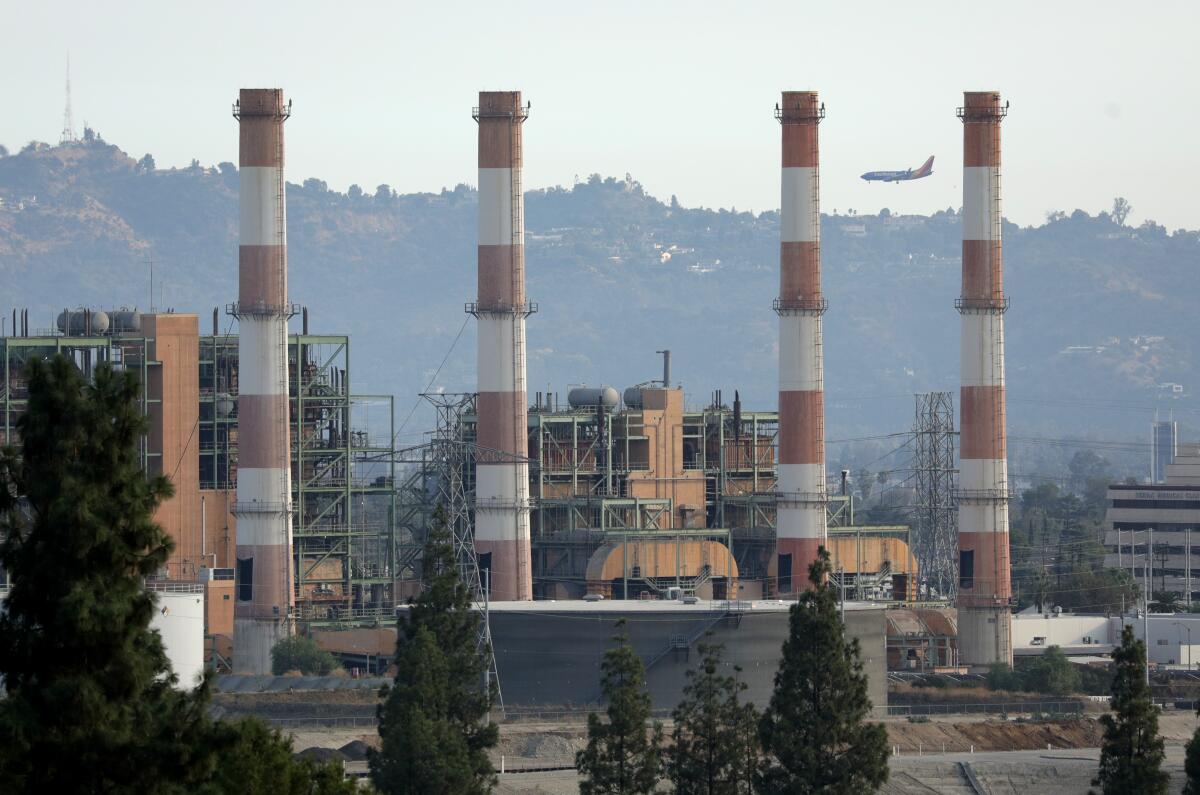
In Pacoima and Sun Valley, activists says the time for deliberation is long past.
DWP staff first notified the public â and its own board of commissioners â about the methane leak in late August. Adams, the utilityâs general manager, made the unexpected disclosure during a Tuesday morning board meeting, announcing that staff would be presenting information about âan issue of methane gas at Valley, and work that weâre doing to control methane.â
The plantâs compressor units had been leaking gas âfor the last couple years,â one staffer said. The utility had a plan in place to fix the compressors later in the year but decided to go public now because NASAâs Jet Propulsion Laboratory had detected the leak as part of an aerial survey, and âtheir information is getting more publicized,â Adams told the board.
âI apologize for catching everyone cold,â he said.
Several board members were stunned. So were members of the public. The questions came fast: When did staff discover the leak? Why hadnât they notified the public earlier? How much methane was leaking from the plant?
Your support helps us deliver the news that matters most. Subscribe to the Los Angeles Times.
There were comparisons to Southern California Gas Co.âs Aliso Canyon gas leak, which spewed record-setting amounts of methane into the air near L.A.âs Porter Ranch neighborhood in late 2015 and early 2016.
âI donât know if I should be terrified or if this is just regular operating procedure,â Cynthia McClain-Hill, president of DWPâs board of commissioners, said at the August meeting.
In turned out the Valley leak was small compared to Aliso Canyonâs. At the next board meeting, staff presented slides showing the faulty compressors had been leaking methane â the main component of natural gas â at rates ranging from 168 to 367 kilograms per hour, Jet Propulsion Laboratory readings showed. At Aliso, the rate exceeded 50,000 kilograms per hour at times.
Still, methane is a powerful climate-change pollutant, trapping far more heat in the atmosphere than equivalent amounts of carbon dioxide. Researchers have increasingly found that methane leaks from oil and gas facilities are a big contributor to the climate crisis.
Community activists also donât trust that DWP is giving them the full story â especially because utility staff said they discovered the leak in August 2019, a full year earlier. Staffers said they didnât notify the public because they didnât believe anyone was at risk.
âI just expect more from DWP,â said Veronica Padilla, Pacoima Beautifulâs executive director, at a utility board meeting.
Utility staff also said Jet Propulsion Laboratory researchers first detected a methane plume at the power plant in 2017 but didnât alert DWP until more recent aerial surveys showed the leak had worsened.
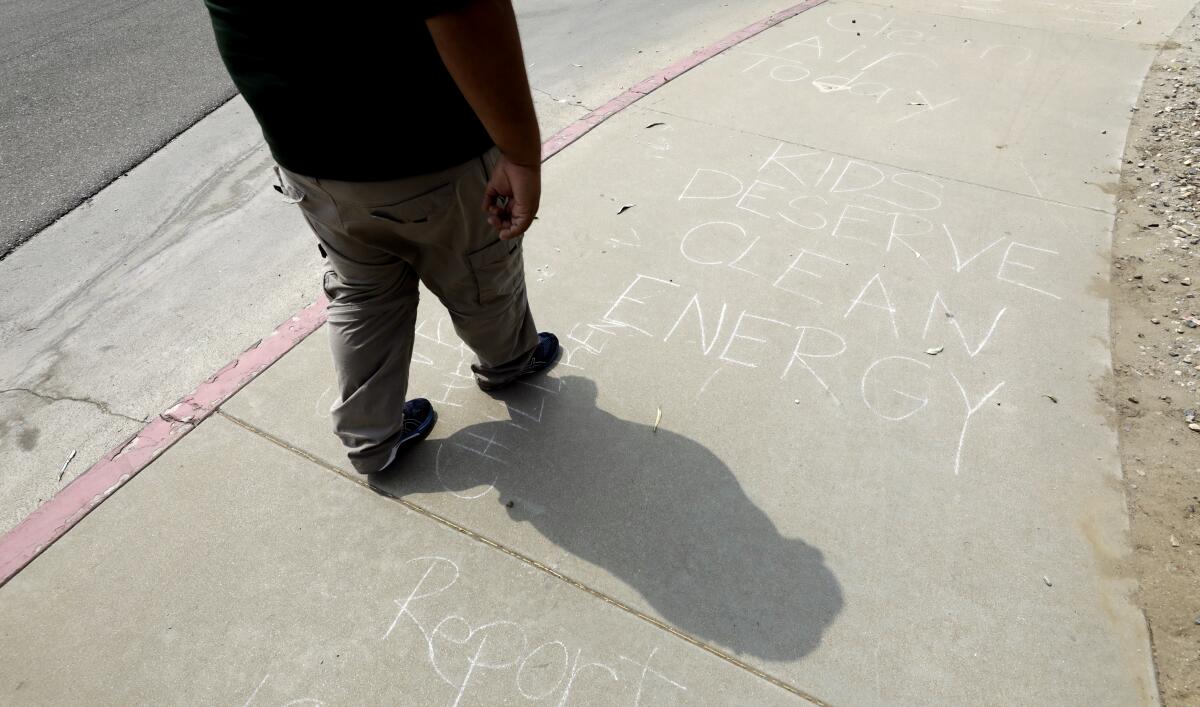
Health impacts are another point of contention.
Methane itself isnât hazardous to human health, except in confined spaces. But natural gas also contains small amounts of cancer-causing benzene, and it generates lung-damaging nitrogen oxides and volatile organic compounds when burned.
Evidence is beginning to emerge of health risks from living near oil and gas facilities. In July, for instance, a UC Berkeley-led study found that pregnant women in rural California who live within six miles of oil and gas wells are far more likely to give birth to babies with low birth weights. And in Porter Ranch, residents are still reporting health problems years after the Aliso Canyon leak.
âLong-term exposure is going to be more unhealthy than short-term exposure,â said Jasmin Vargas, an organizer with Food and Water Watch, an environmental group that has called for Valley Generating Station to be shut down.
The leak has mostly been stopped. In response to public pressure, DWP worked with SoCalGas, which supplies the power plant with natural gas, to implement a temporary solution. A permanent fix is planned for November.
Politicians have been applying pressure, too.
A City Council committee approved motions last week calling for DWP to fix leaks more quickly and install air-quality monitors near Valley Generating Station. A third motion, introduced Tuesday, calls for the creation of a âcommunity amenities trust fundâ to benefit people living near the plant, with goals to include helping residents and schools buy indoor air purifiers and air conditioners.
Council President Nury Martinez, whose district includes parts of the northeast San Fernando Valley, slammed DWP officials for making plans to shut down gas-fired generators in coastal communities while allowing methane to leak in the Valley for years.
The city-run utility, she suggested, hasnât sufficiently prioritized environmental justice in its efforts to fight climate change.
âI think the departmentâs success has taken communities like Sun Valley for granted,â Martinez said.
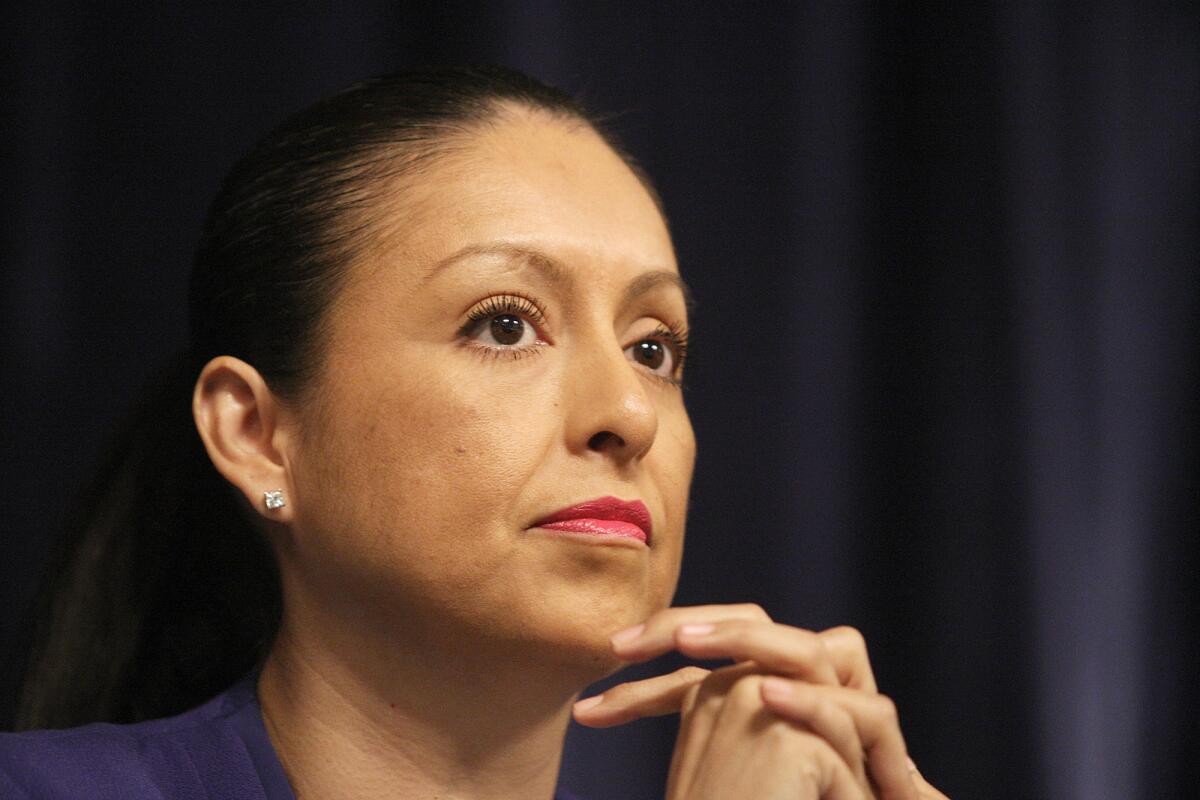
DWP staff say the methane plume didnât leave the power plant site. And recent tests by South Coast Air Quality Management District in the surrounding neighborhood found levels of methane and volatile organic compounds âwithin typical background levels.â
âAt no time do we believe we actually had a risk to employees or public health,â Adams told the utilityâs board.
Still, DWP officials said they would develop a monitoring program to track air quality around Valley Generating Station and other power plants, and begin notifying surrounding communities of any problems.
âWe have an obligation to keep our neighbors informed,â Adams said. âAnd we absolutely should have done so.â
Los Angeles gets about 30% of its electricity from natural gas, with the bulk of that power coming from Valley Generating Station and gas plants in Playa del Rey, Long Beach and Wilmington. Last year, Mayor Eric Garcetti killed a plan to invest billions of dollars prolonging the life of 10 generating units at those coastal plants. The 10 generators will shut down over the next decade.
But DWP had already ârepoweredâ several other gas generators at the coastal plants, which could keep running for decades.
Those gas plants â along with an out-of-state coal plant thatâs scheduled to close in 2025 â are one reason L.A. had so much power on hand during last monthâs heat wave that it was able to provide spare capacity to the rest of the state, helping avert larger outages.
âWe pulled out all the stops,â said Reiko Kerr, DWPâs senior assistant general manager for power system engineering.
Still, even as DWP continues to lean on coal and gas, itâs moving aggressively toward cleaner energy. Nancy Sutley, the utilityâs chief sustainability officer, said the utility expects to generate 96% to 97% of its electricity from climate-friendly sources by 2036.
In that scenario, Sutley said, Valley Generating Station and other gas plants would still be online â but they would operate rarely, most likely on extremely hot days when electricity demand would be highest.
Will that be good enough? Gov. Gavin Newsom suggested this month that the stateâs 100% clean-energy target should be moved up from 2045 in light of the climate-influenced wildfires ravaging the American West. Democratic presidential nominee Joe Bidenâs climate plan sets a goal of 2035.
Los Angeles is evaluating the 2035 timeframe as part of a 100% renewable-energy study with the National Renewable Energy Laboratory, a federally funded research lab. The study isnât finished â final results are expected in the next few months â but preliminary findings suggest that accelerating the 100% timeline from 2045 to a decade earlier could double the costs.
âYou have to think about whatâs the incremental benefit of accelerating,â Sutley said.
Supplying enough power on hot summer evenings is one of Californiaâs main challenges. But experts say there solutions.
The activists fighting to shut down Valley Generating Station have an answer to that question.
Ramirez pointed to a bitter irony: Even as the power plant helped Los Angeles avoid electricity shortages, heat-related equipment failures caused many nearby residents to lose power during last monthâs extreme heat. From Aug. 14 through Aug. 20, about 7,500 DWP customers in Pacoima and Sun Valley experienced outages, more than almost anywhere else in the city.
âOur stance is very clear. There needs to be a shutdown of gas operations, period,â Ramirez said. âThe time for innovation is now.â
